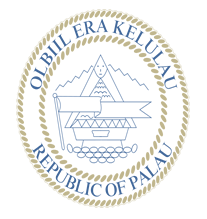Palau: Government
Key Figures
- Chief of State:
- President Surangel Whipps Jr.
- Head of Government:
- President Surangel Whipps Jr.
Overview
- Government Name:
- Republic of Palau
- Constitution:
- Adopted: 1979; Outlines territory, sovereignty and supremacy, citizenship, fundamental rights, traditional rights, responsibilities of the national government, suffrage, the branches of government, state governments, and finance.
- Government Type:
- Presidential Republic in Free Association with the United States

Index of Economic Freedom
Country Risk Rating
Government Branches
| Main Powers | Election Process | Election Cycle 1 | |
|---|---|---|---|
| Executive | President is chief of state and head of government for Palau. Vice president assumes role of president when/if necessary. |
Elected by absolute majority vote through a two-round system. |
4 years |
| Judicial | Supreme Court is divided into trial and appellate divisions and also handle disciplinary and other special proceedings. |
Supreme Court judges nominated by a 7-member independent body consisting of judges, presidential appointees, and lawyers and are then appointed by the president. |
Mandatory retirement age of 65 |
| Legislative | National Congress is main legislative body of government while the Senate is the upper house. |
Senate members are elected by plurality vote in multi-member constituencies. House of Delegates members are elected by plurality vote in single-member constituencies. |
4 years |
Regional Trade Blocs
No Regional Trade BlocsInternational Organization Participation [2]
Environmental Agreements [3]
Tax Information [2]
- Tax Authority:
- Information not available
- Tax Name:
- Information not available
Sources:
- ElectionGuide http://www.electionguide.org/
- EY, http://www.ey.com
- CIA World Factbook, https://www.cia.gov/the-world-factbook/
- U.S. Bilateral Relations Fact Sheets http://www.state.gov/r/pa/ei/bgn/


